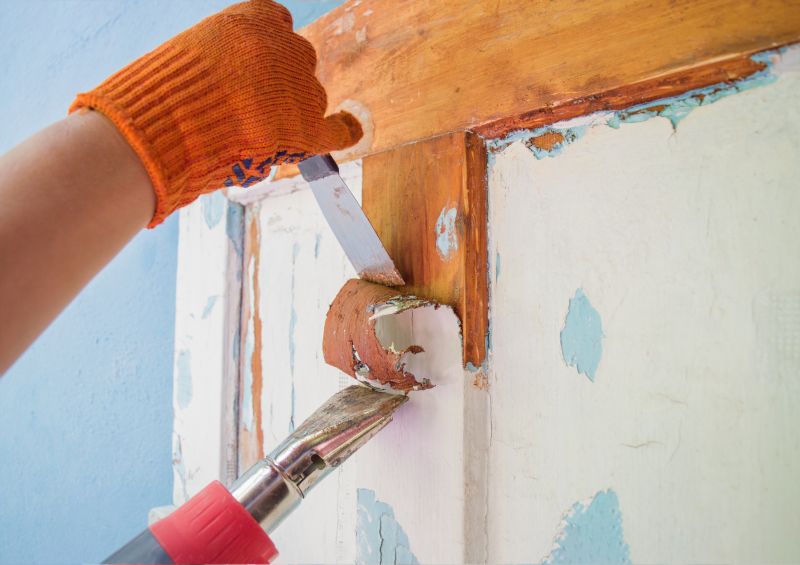Expert Picks For Door Varnish Removal Supplies You Can Trust
Find highly recommended tools and chemicals that make removing varnish from doors easier and more precise for DIY and professionals alike.
 Removing varnish from doors can be a meticulous task that requires the right products to achieve effective results without damaging the underlying surface. Various tools and solutions are available to assist in this process, each suited to different types of varnish, door materials, and user preferences. Whether you're undertaking a renovation project or restoring an older piece, selecting the appropriate removal products can streamline the process and help you achieve a smooth, clean finish.
Removing varnish from doors can be a meticulous task that requires the right products to achieve effective results without damaging the underlying surface. Various tools and solutions are available to assist in this process, each suited to different types of varnish, door materials, and user preferences. Whether you're undertaking a renovation project or restoring an older piece, selecting the appropriate removal products can streamline the process and help you achieve a smooth, clean finish.
Top Overall Option
Chemical Varnish Stripping Gel
A versatile gel-based varnish remover that adheres well to vertical surfaces, making it suitable for door applications. It effectively softens multiple layers of varnish, allowing for easier scraping and removal. Its formulation is designed for efficient work while minimizing the need for excessive mechanical effort, providing a user-friendly experience for various door restoration projects.
Types of Products For Door Varnish Removals
Chemical Varnish Strippers
Solvent-based gels or liquids designed to dissolve varnish layers for easy removal.
Paint and Varnish Remover Sprays
Aerosol sprays formulated for quick application on door surfaces, suitable for light to moderate varnish layers.
Gel-Based Varnish Removers
Thick gels that stay in place on vertical surfaces, ideal for controlled application.
Sanding Pads and Blocks
Manual abrasive tools used to sand off varnish after chemical softening or for light removal.
Steel Wool and Abrasive Pads
Fine and coarse pads for scrubbing away varnish and smoothing the surface afterward.
Heat Guns and Infrared Removers
Tools that use heat to soften varnish for manual removal, suitable for sensitive surfaces.
Putty Knives and Scrapers
Manual tools used to scrape off softened varnish after chemical application.
Eco-Friendly Removers
Less harsh chemical solutions designed for safer handling and disposal.
Multi-Tool Attachments
Oscillating tool accessories for precise removal in tight corners and detailed areas.
Varnish Stripping Brushes
Specialized brushes to apply chemical removers evenly across large surfaces.
Abrasive Sponges
Soft yet effective sponges for light varnish removal and surface preparation.
Chemical Paint Removers
Products capable of removing multiple types of finishes, including varnish, paint, and stain.
Portable Sandblasters
Equipment for aggressive removal, suitable for large or heavily coated surfaces.
Varnish Stripping Wipes
Convenient pre-soaked wipes for small touch-up or detailed work.
Popular Choices
Widely used for their effectiveness in softening multiple layers of varnish.
Favored for quick and easy application on various door surfaces.
Popular for their controlled application and minimal runoff.
Commonly used in combination with chemical removers for thorough removal.
Trusted for their ability to gently scrub away softened varnish.
Preferred for their ability to soften varnish without chemicals in some cases.
Popular for detailed and precise removal in tight spots.
Growing in popularity for safer handling and disposal.
Often used for finishing and smoothing after removal.
Chosen for large-scale or heavily coated doors needing aggressive removal.
Convenient for small areas or touch-up work.
Chemical removers, such as gel-based varnish strippers, are popular for their ability to cling to vertical surfaces and work on multiple layers of finish. These products often contain solvents designed to soften and break down varnish, making it easier to scrape away. For those seeking a more manual approach, abrasive tools like scrapers, steel wool, or sanding pads can be effective, especially for light removal or touch-up work. Combining chemical solutions with mechanical methods can often yield the best results.
It is important to consider the safety and compatibility of removal products with your door's material. Some chemical strippers may require protective gear during application and proper disposal afterward. Additionally, the type of door surface—whether wood, MDF, or painted—can influence which products are most suitable. Preparing the work area, ensuring proper ventilation, and testing a small area beforehand can help prevent unintended damage. With the right selection of products, removing varnish can be a manageable task that leads to a beautifully restored door surface.
Key Buying Considerations
- Type of varnish and its thickness to determine the most effective removal method.
- Material of the door surface to select compatible removal products that won’t cause damage.
- Ease of application, whether you prefer sprays, gels, or manual tools.
- Safety features and protective requirements for chemical removers.
- Environmental factors, such as ventilation needs and disposal guidelines.
- Level of removal needed—light touch-up or complete stripping.
- Time considerations and whether quick application methods are preferred.
- Compatibility with other finishing products if reapplying varnish afterward.
- Budget constraints and cost-effectiveness of different removal options.
- Availability of tools and products in local stores or online.
- User experience and comfort with manual versus chemical removal methods.
- Surface finish desired after removal—smooth, textured, or ready for refinishing.
- Potential for mess and cleanup involved with each method.
- Longevity and durability of the remaining surface after removal process.
- Presence of any special features such as eco-friendliness or low odor.
